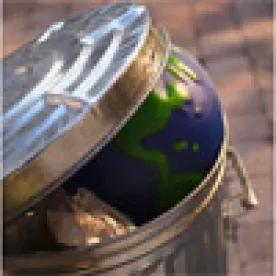The European Commission has adopted a Circular Economy Package (“Package”) intended to create a single market for the reuse of materials and resources. The policy initiatives discussed in the Package will impose on companies manufacturing or marketing goods in Europe additional eco-design, waste take back, and other producer responsibility requirements. Some initiatives may also encourage the development of second hand and other alternative markets.
The Package consists of a framework Communication and various upcoming legislative and non-legislative initiatives, including:
-
legislative proposals to amend the Waste Directive, the Packaging and Packaging Waste Directive, the Waste Landfill Directive, and the Directive on Waste Electrical and Electronic Equipment;
-
announcements of upcoming legislative proposals to amend the EU Fertilizers Regulation, to introduce new product design, and marking requirements to facilitate the dismantling, reuse and recycling of electronic displays;
-
an initiative on Green Public Procurement; and
-
the review of the voluntary EU eco-label criteria.
The Package is intended to replace a series of previous legislative and policy initiatives on waste and resource efficiency that, in a controversial move, the Commission withdrew earlier this year.
The Commission Communication
The Communication sets the ground for various legislative and non-legislative measures on a circular economy, by discussing different initiatives that focus on production, consumption and waste management. The document also addresses secondary raw materials and specific sectorial actions.
Production: The Communication discusses the adoption of measures on the design of products to improve their durability and reparability, and on the process of production to reduce the amount of resources used. In this context, the Communication announces the following initiatives:
-
A proposal on product design and marking requirements under the Directive on Eco-design Requirements for Energy Related Products to facilitate the dismantling, reuse and recycling of electronic displays (2016 onwards);
-
The adoption of an Eco-design Working Plan to develop requirements on the durability, reparability, and recyclability of products (2016-2017);
-
Guidance on best waste management and resource efficiency practices in industrial sectors as part of the Best Available Techniques reference documents (“BREFs”) under the Industrial Emissions Directive (2016 onwards).
Consumption: The Communication discusses different measures to boost the consumption of greener and more durable and recyclable products by enhancing consumer information and promoting the government procurement of green products. For these purposes, the Commission announces, among other initiatives:
-
A review of the EU voluntary eco-label scheme to increase its effectiveness and contribution to a circular economy (2016);
-
Measures in the context of Green Public Procurement to emphasize durability, reparability, recyclability, and other circular economy aspects;
-
Measures to tackle false environmental claims.
Waste Management: The Communication raises concerns on the wide discrepancies on waste management policies among Member States. Thus, the Commission presents legislative proposals to amend the Directive on Waste, Landfill of Waste Directive, Packaging and Packaging Waste Directive and Directive on Waste Electrical and Electronic Equipment in order to introduce EU wide binding targets. By 2030, there will be an obligation on Member States to:
-
Recycle a minimum of 65% (by weight) of its municipal waste;
-
Recycle a minimum of 75% (by weight) of its packaging waste;
-
Reduce landfilled waste to a maximum of 10% of total waste generated.
Sectorial Actions: The Communication also discusses initiatives in specific sectors:
-
Secondary raw materials: The Communication announces that it will present a legislative proposal to amend the Fertilizers Regulation to facilitate the EU-wide recognition of organic and waste based fertilizers (early 2016). This proposal may also address the presence of cadmium and other heavy metals in fertilizers.
-
Plastics: The Communication announces that it will present a strategy to address issues of recyclability, biodegradability, the presence of hazardous substances, and the prevention of marine litter (2017);
-
Food Waste: The Commission announces the adoption of a common EU methodology to measure food waste (2016), and that it will explore options on date marking to improve the use and consumer understanding of “best before” and similar label indications (2017).
-
Biomass: The Commission announces the publication of guidance on best practices on the cascading use of biomass (2018-2019).
Next Steps
The European Parliament and Council are expected to adopt resolutions on the Commission’s Communication.
The European Parliament and Council must also consider for adoption the legislative proposals to amend the Directive on Waste, Landfill of Waste Directive, Packaging and Packaging Waste Directive and Directive on Waste Electrical and Electronic Equipment that the Commission has presented. This is likely to take at least 18 months, and will allow the Parliament and Council to further increase (or reduce) the targets and other requirements proposed by the Commission.
Laura Arcadipane is co-author of this article.



 />i
/>i
